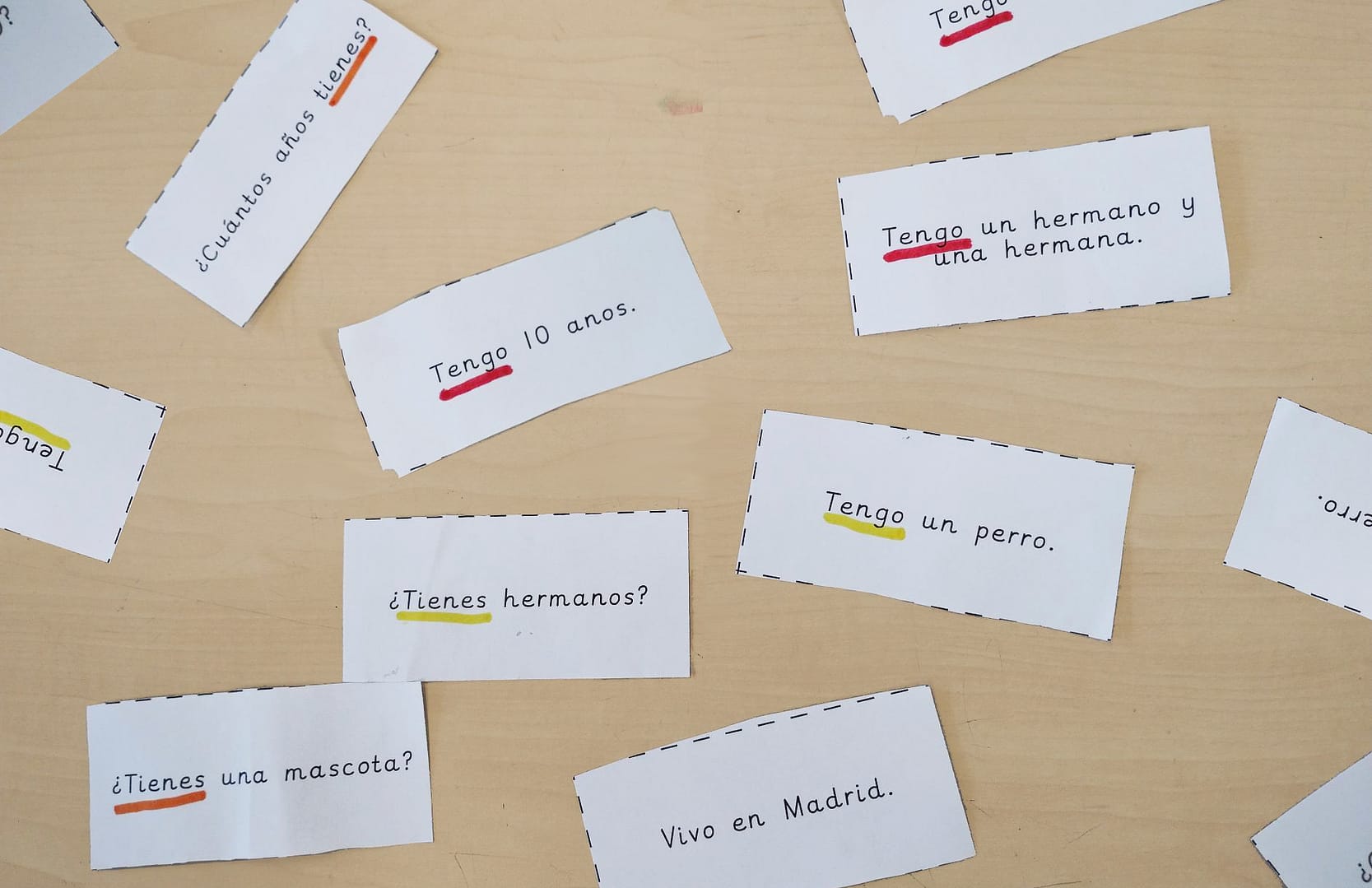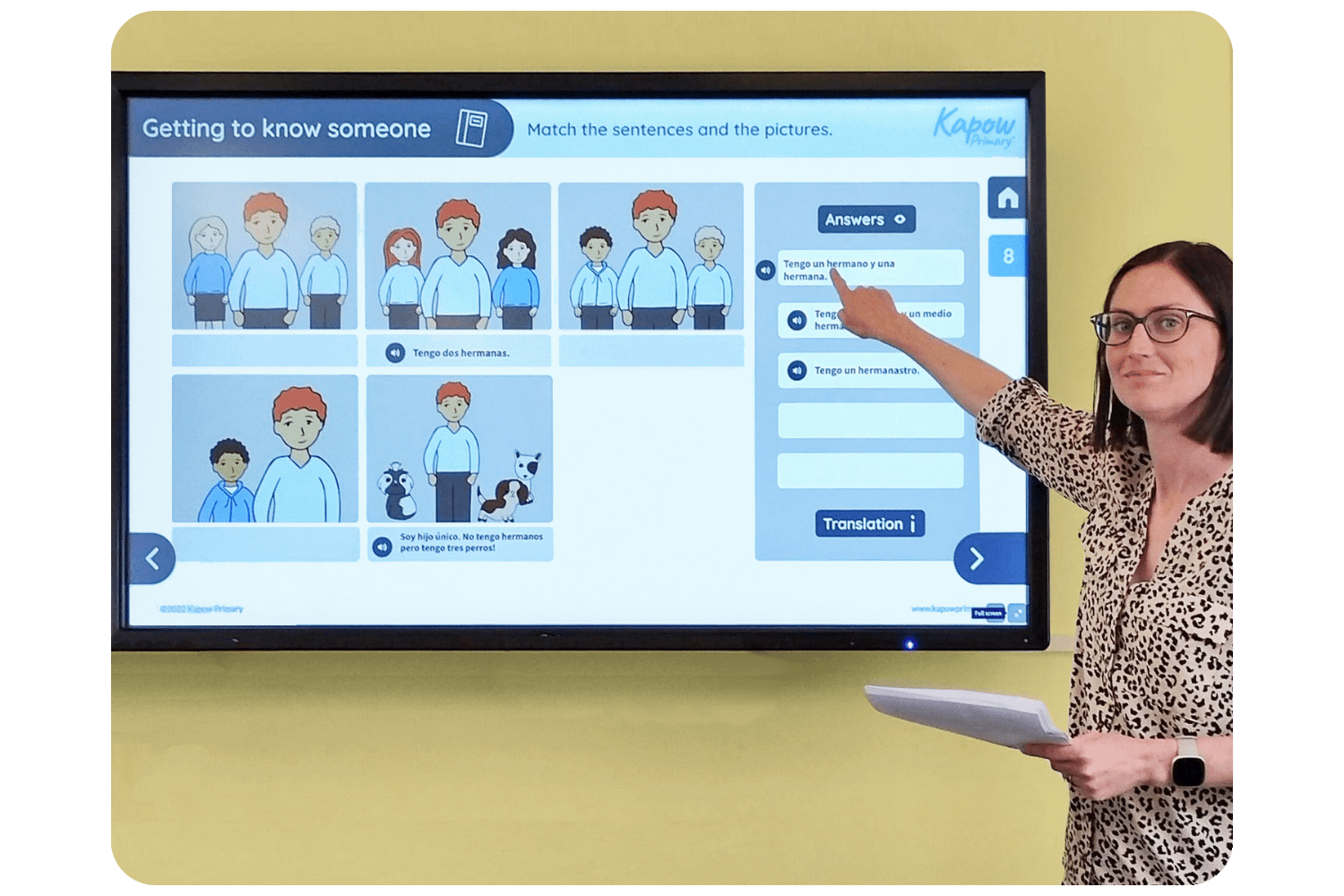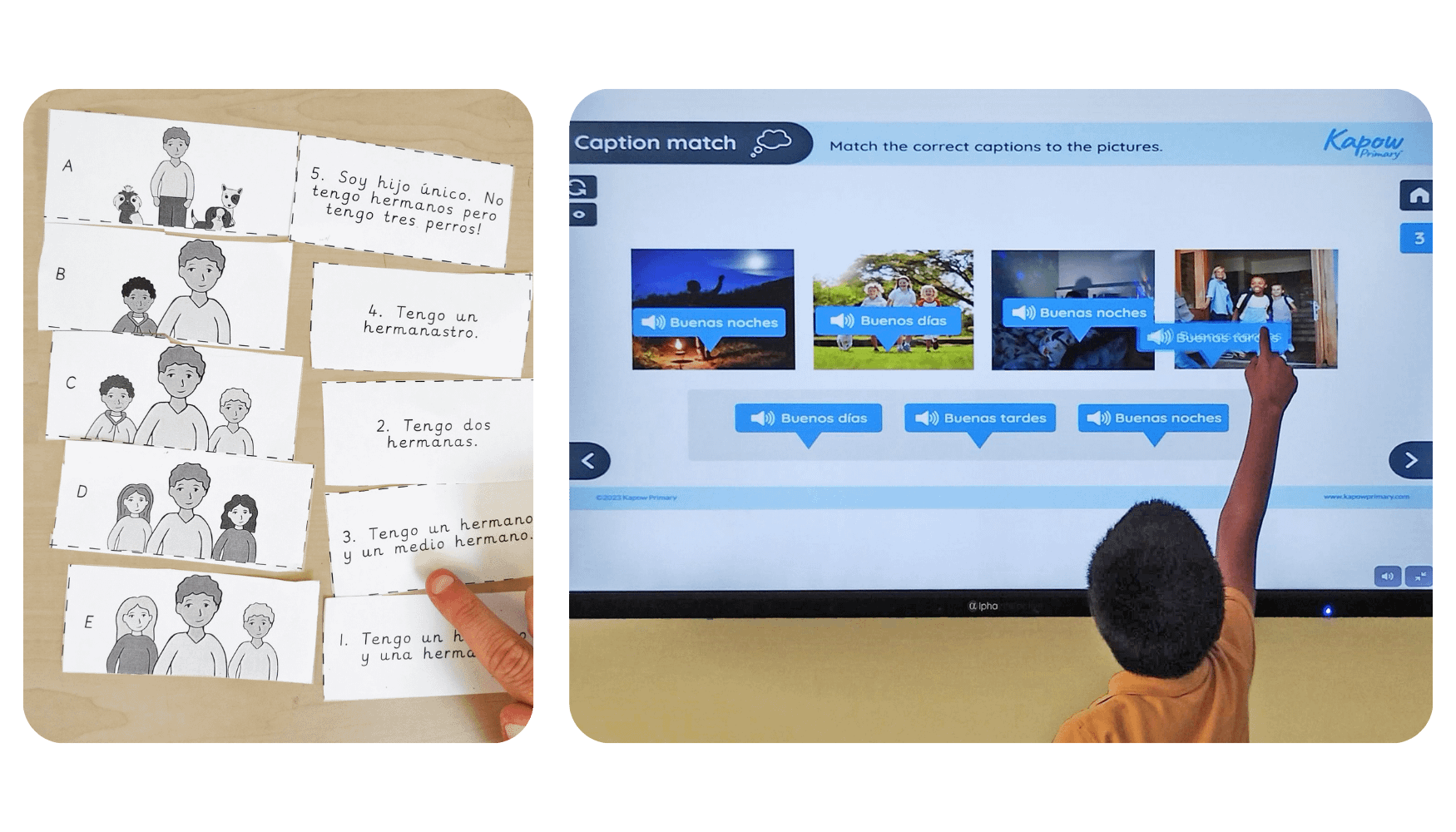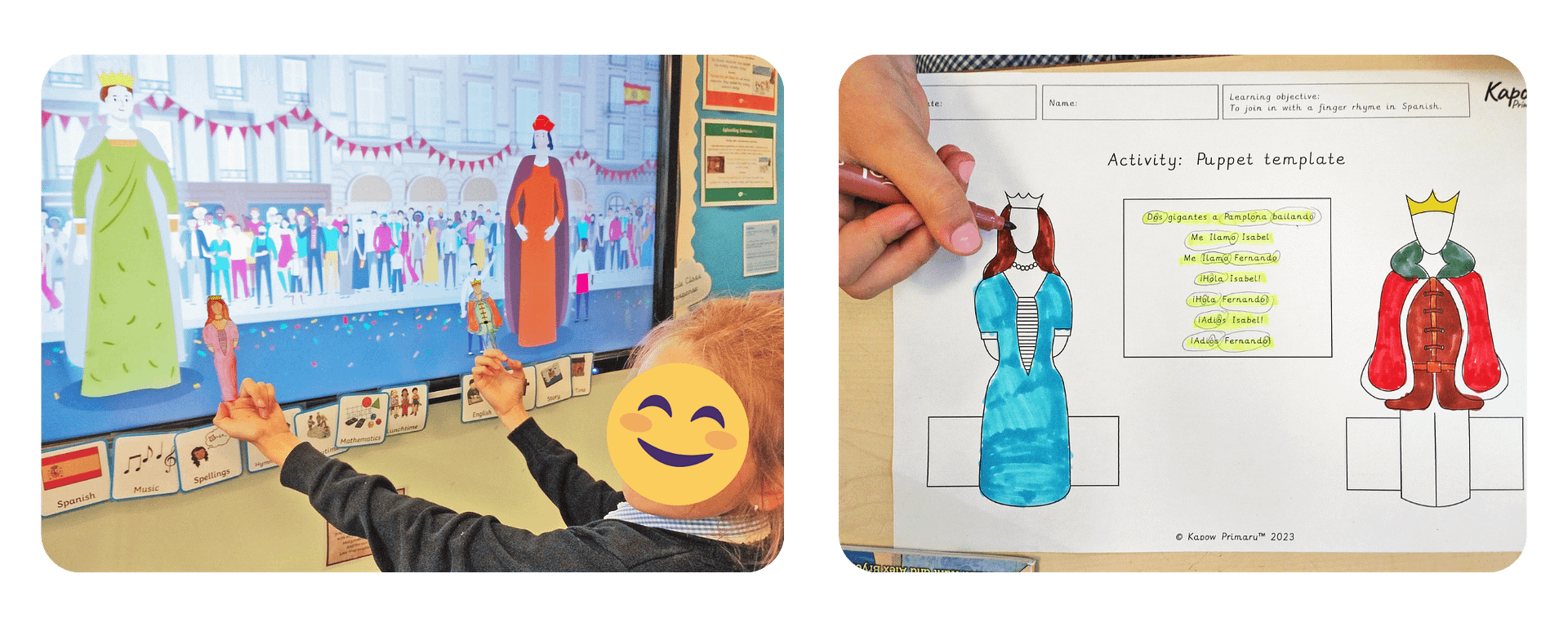¡Es Fantástico! A Pilot Study Of Kapow Primary Spanish
Written by Kapow Primary
Published on 8th November 2023
Last Updated: 8th November 2023
Written by Kapow Primary
Published on 8th November 2023
Last Updated: 8th November 2023

We were thrilled when St John’s Catholic Primary School in Bath agreed to be part of a pilot study for Kapow Primary’s new Spanish scheme.
Find out what we did there and read one school’s story about the positive impact of teaching and learning Spanish.
Over two weeks, seven mixed-age key stage 2 classes trialled our Spanish lessons. The pupils were taught by teachers and HLTAs from the school and guided by Kapow Primary Spanish content creator Belinda Dean.
Children in the school had been taught Spanish by a specialist teacher for a few years; the teaching staff did not usually deliver it and needed more confidence in their Spanish knowledge. They required something that all teachers could easily use, regardless of their experience of teaching Spanish.

A teacher using an interactive presentation from Y5: Describing friends and family.
Definitely the audio recordings. Before trying the lessons, all the teachers said they didn’t feel confident speaking Spanish. However, just from listening to the pupil audio recordings a few times while teaching, they started repeating them themselves.

We developed the scheme with non-specialists in mind who could learn alongside the children. It was wonderful to see this taking place, with staff confidence growing and professional development happening in every lesson.
 Kapow Primary’s Spanish scheme includes teacher CPD videos. Teachers can use these to practise the required language before they teach it, and can get to grips with other language features, including grammar.
Kapow Primary’s Spanish scheme includes teacher CPD videos. Teachers can use these to practise the required language before they teach it, and can get to grips with other language features, including grammar.
During lessons, staff can find support from the audio and visual pupil resources, including:

Watch a taster of our phoneme videos, featuring Mouth Mechanics®:
The interactive presentations made the lessons easy to access. They enabled teachers to lead the pupils through the lessons using the embedded audio recordings. This is precisely what they were designed to do, so it was encouraging to see it happening.

It was interesting to observe how different teachers accessed lesson plans; some taught lessons directly from the Kapow Primary website, while others preferred downloading and printing off a paper lesson plan.

The children really enjoyed the lessons. They were particularly enthusiastic about interactive lessons, including matching or labelling, and activities that they could continue independently.

Pupils really enjoyed matching activities and presentations.


Two of the most well-received lessons were:
Year 3: Saying goodbye from the unit Spanish Greetings with Puppets, where children use coloured counters to match different phonemes. Pupils were keen to continue this activity. It was wonderful to see children so eager to practise Spanish phonics.

Phoneme matching with counters and sequencing using the interactive presentation.


Designing Spanish puppets and practising greetings with them.
In the last lesson, Presenting our outfits from the Year 6: Clothes in Spanish unit, children produced a group presentation describing what someone was wearing at a fashion show. Pupils loved participating in this hands-on activity; it was an exciting way for them to apply their learning.

Yes, in a two-week trial, it isn’t possible to get through all the lessons in a unit. Teachers could get around this by focusing on just a few lessons. Supported by Kapow Primary’s resources, they could adjust their teaching quickly, even when they had jumped ahead and missed a lesson.

Another challenge was that pupils at St John’s are in mixed-age classes. However, teachers could modify the lesson content appropriately and successfully for the different age groups.
Mixed-age planning is not yet available for Spanish, so it was reassuring to learn that this needn’t be a barrier to schools interested in using this scheme.
The trial has made teaching staff much more confident and enthused about teaching Spanish. We know that learning a language can and should be fun. The pupils and teachers at St John’s can undoubtedly vouch for this!

As well as lesson plans, Kapow Primary provides extensive subject planning and subject leader resources.
For schools where Spanish isn’t taught, we also have a comprehensive scheme of work for primary French.
Muchas gracias to the staff and pupils at St John’s Catholic Primary School. We hope to hear more from you in the future about your Spanish learning journey. ¡Buena suerte!